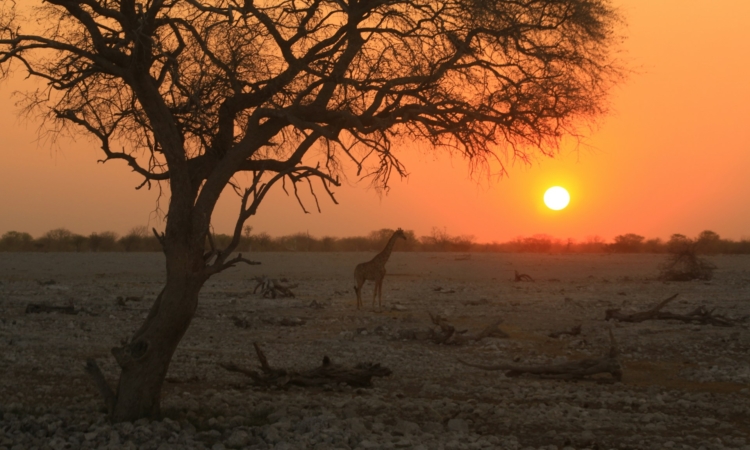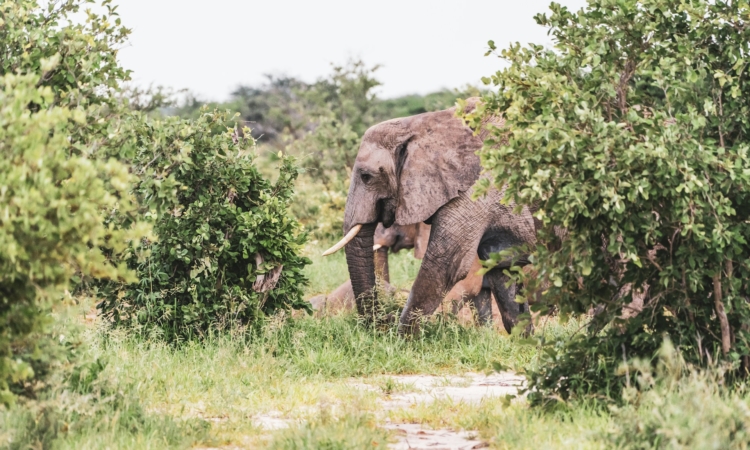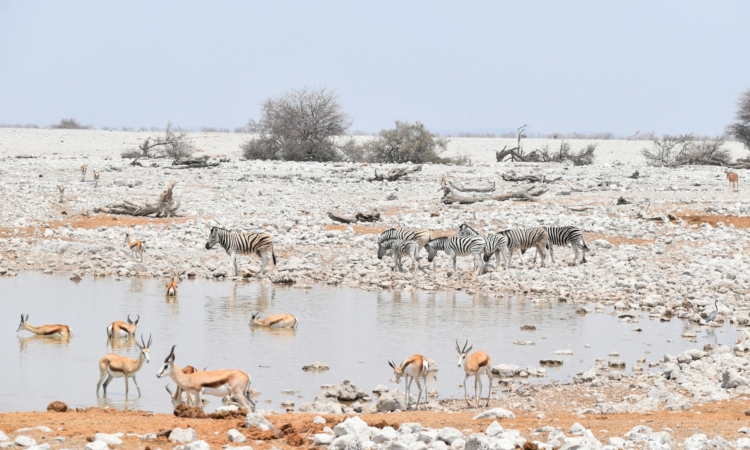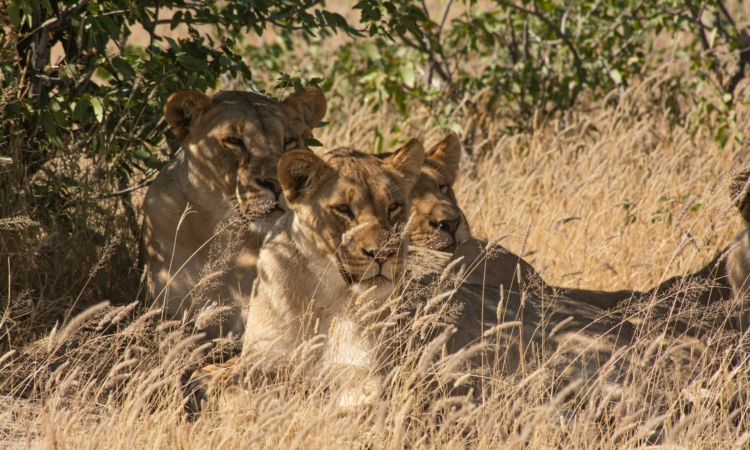In January, the rainy season is at its peak in Etosha National Park. The park normally receives heavy rain on about 13–14 days during the month, with total rainfall between 94 and 117 mm. Humidity stays between 45% and 65%. Visitors can expect a mix of weather, including overcast days, afternoon thunderstorms, and some clear days with sunshine.
Daytime temperatures are warm, averaging between 33°C and 34°C, while night temperatures drop to around 19°C–20°C. Winds are usually mild at 10–16 km/h, but during storms they can rise above 20 km/h.
The rains bring clear changes to the park’s appearance and wildlife. Acacia trees, grasses, and shrubs grow quickly, covering previously dry areas with green leaves. Pools of water form in low-lying areas, and seasonal wetlands appear. These attract many bird species, including pelicans and flamingos, which feed in the shallow water. Thick grass growth gives plenty of food for herbivores and shelter for ground-nesting birds and smaller animals.
Wildflowers bloom across the park, adding colour to the scenery and providing cover for wildlife. Because water is widely available, animals do not need to gather at permanent waterholes and can be seen in many different parts of the park.
January is also a key calving season. Many antelope species give birth during this month, and mothers often move to quieter areas to protect their young from predators.
Visitors should be prepared for afternoon or evening showers. A raincoat and waterproof bag for cameras and electronics are useful. On sunny days, sunglasses, a wide-brimmed hat, and sunscreen are recommended. Roads can become muddy and slippery, so a 4×4 vehicle is advised for game drives.
This month falls within the low tourist season, meaning the park is less busy and game-viewing areas are quieter. However, some lodges or camps may close for maintenance or due to lower visitor numbers, so it is best to confirm availability before planning a trip.
January offers a different kind of safari experience, with green scenery, active birdlife, and the chance to see young animals, but it requires preparation for wet weather and challenging road conditions.
Find out more about Etosha in March and see our detailed guide on Etosha in December.







